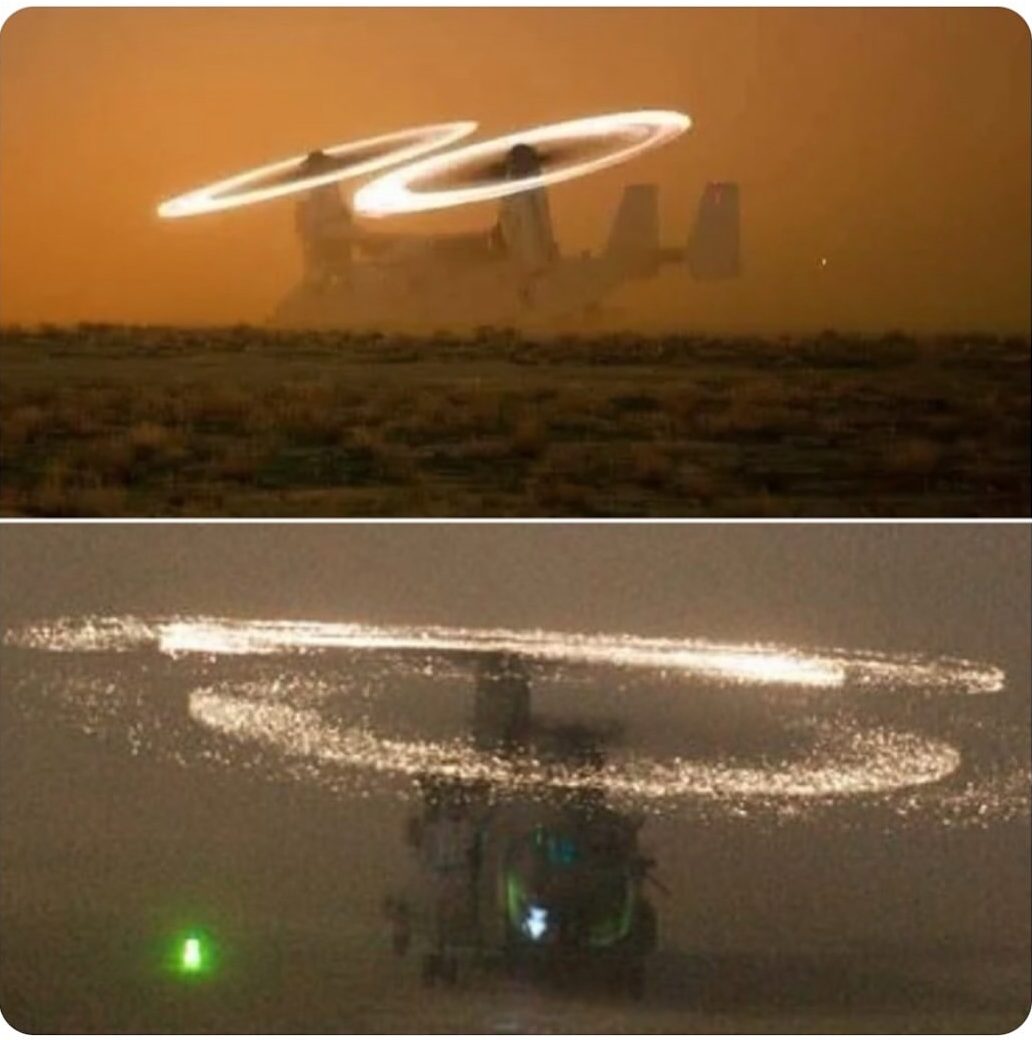When Helicopters Fly Through Sandstorms, They Create a Mesmerizing Halo of Sparks That Looks Like Something Out of Science Fiction
Every now and then, nature and technology collide in a way that feels almost unreal, creating a sight so breathtaking it looks like it belongs in a movie rather than real life. One of those rare moments happens when helicopters fly through sandstorms. Instead of just the whirring blades and the roar of engines, what appears is something almost magical: glowing halos of sparks circling the aircraft. It looks like a ring of fire dancing in the air, an otherworldly crown of light wrapped around the machine.
This isn’t a special effect or some military trick—it’s a real natural phenomenon, and it has a scientific explanation that’s as fascinating as the visuals themselves. Pilots and soldiers who have experienced desert operations know it well. Sometimes referred to as “St. Elmo’s fire,” this eerie spectacle is a result of static electricity mixing with the millions of grains of sand thrown into the air during a storm.
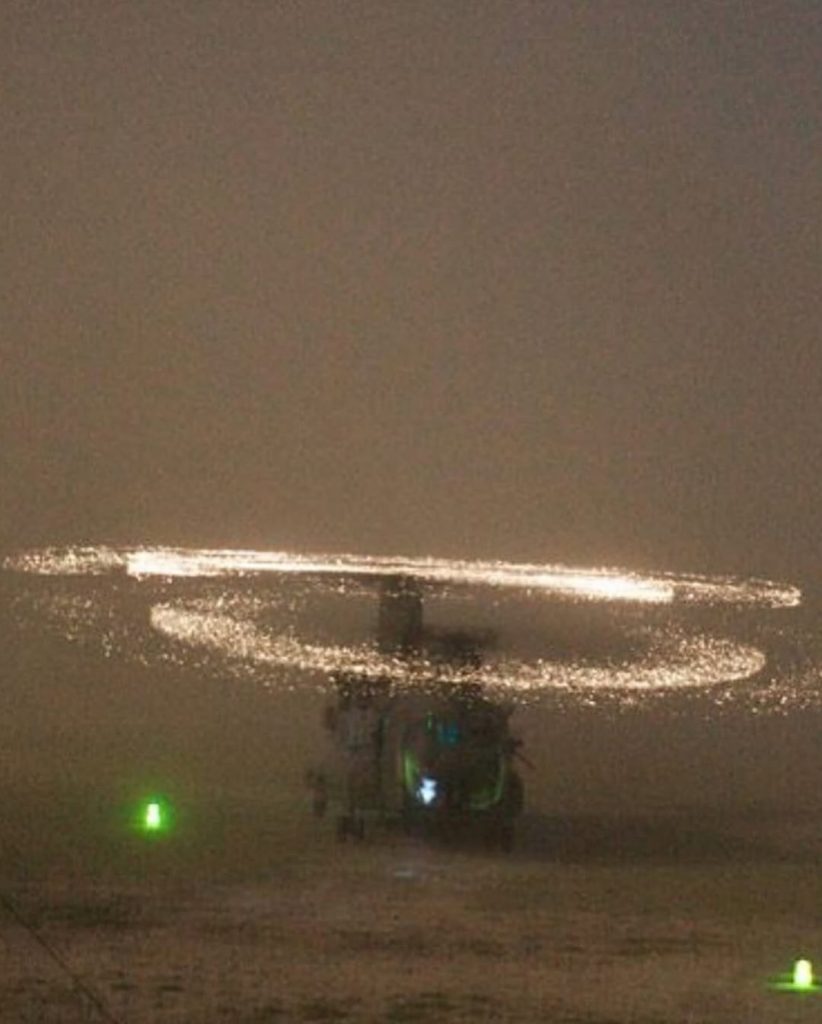
Imagine being in the middle of a desert at night, the wind howling, sand swirling so thick it feels like you’re inside a cloud of dust. Now picture the chopping sound of helicopter blades slicing through that storm. Every time those blades hit the tiny grains, they build up static charges, the same way rubbing a balloon against your hair makes it stick up. Except here, the friction is happening at a much larger and more violent scale. The electricity builds and builds until it releases, lighting up the edges of the rotor blades in dazzling arcs of sparks.
To the human eye, it looks like the helicopter is wearing a halo. From a distance, it almost appears as though circles of neon light are spinning in the dark sky. Some who have witnessed it describe it as hypnotic—like watching lightning stretched into glowing rings. Others call it terrifying, because the storm that creates it is already dangerous enough, and now the helicopter itself seems alive with electricity.
But while it may be beautiful, this halo of sparks is far from harmless. The same electrical discharges that create the light can also interfere with the aircraft’s communication systems and electronics. Pilots sometimes struggle to keep their radios clear or their navigation equipment stable when this phenomenon occurs. That’s why helicopters designed for desert missions are built with special protective materials that help reduce static buildup. Engineers know that while the glowing arcs might look like something from a science fiction film, the risks they pose are all too real.
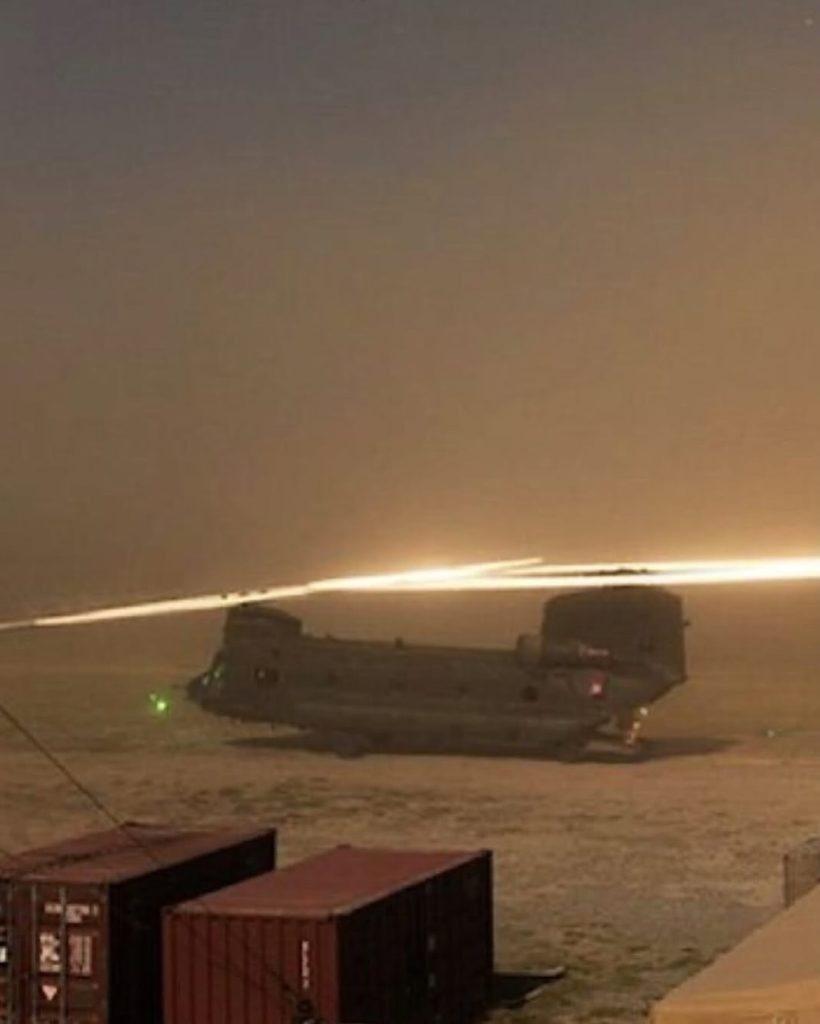
Still, there’s something deeply poetic about it. A helicopter, one of the most rugged and practical machines ever created, suddenly becomes part of a natural light show, glowing like a mythical creature in the middle of a storm. It’s a reminder of how even the toughest technology is still at the mercy of nature, and how the forces of the earth can transform something mechanical into something magical.
The roots of this effect go back to physics, and it isn’t unique to helicopters. St. Elmo’s fire has been observed for centuries, usually by sailors at sea. In storms, the masts of ships would sometimes glow with faint blue light, a sign of electrical discharges caused by friction in the atmosphere. Sailors once considered it an omen—sometimes good, sometimes bad—but always supernatural. They believed it was a sign from the heavens, a light sent to protect them on dangerous waters. Today, we know it’s just ionized air, but that doesn’t make it any less awe-inspiring.
In helicopters, the effect is amplified by the sheer size and speed of the rotor blades. Each blade is like a lightning rod spinning through the storm, creating trails of light as it cuts through the electrically charged air. Photographers lucky enough to capture it describe it as one of the most difficult but rewarding sights to document. It doesn’t happen every time a helicopter flies into a sandstorm, and when it does, it often vanishes as quickly as it appears.
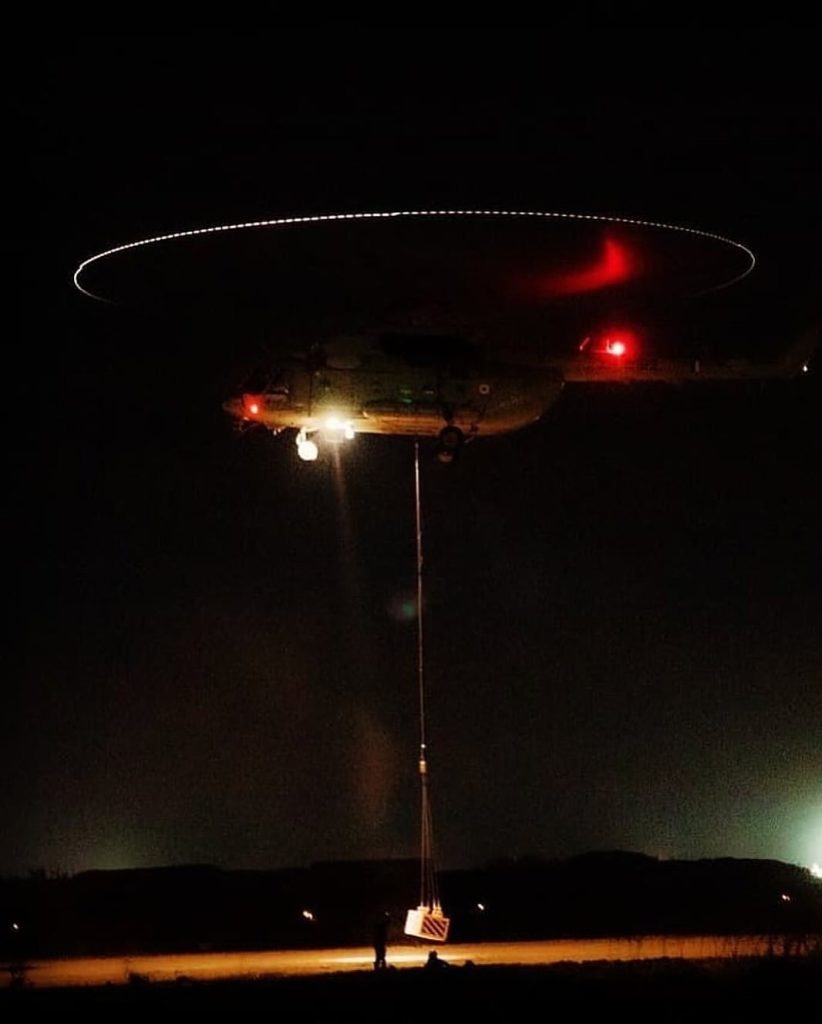
For those on the ground watching, the sight is unforgettable. The desert night is usually pitch black, with only faint stars above and dust all around. Then suddenly, arcs of white fire circle overhead, glowing brighter with every turn of the blades. It’s haunting, like something ancient and powerful is at play. Soldiers have shared stories of sitting in the desert, exhausted and battered by wind, only to look up and see their helicopter glowing like a fiery ring in the sky. Some say the sight gave them courage, others say it made them nervous, but none ever forget it.
And yet, as much as it captures the imagination, it’s also a reminder of the harsh realities of desert warfare and aviation. Sand is the enemy of helicopters. It grinds down engines, scratches glass, wears away at moving parts, and can make even routine flights dangerous. Add in the static electricity and the glowing arcs of sparks, and it’s clear why pilots treat desert flights with extra caution.
But that tension between beauty and danger is what makes the halo effect so captivating. It’s both a warning and a wonder, a spectacle born from chaos. Like the Northern Lights dancing over frozen landscapes, or lightning flashing across a summer storm, the helicopter halo is nature’s way of reminding us of its power—even when mixed with human technology.
There’s also something symbolic about it. A helicopter is usually associated with power, control, and precision. Yet here, it becomes a stage for forces far beyond human control. The halo of sparks isn’t man-made—it’s nature responding to the machine, transforming it into a canvas of light. It shows us that even in our most advanced moments, we’re still participants in the vast, unpredictable drama of the natural world.
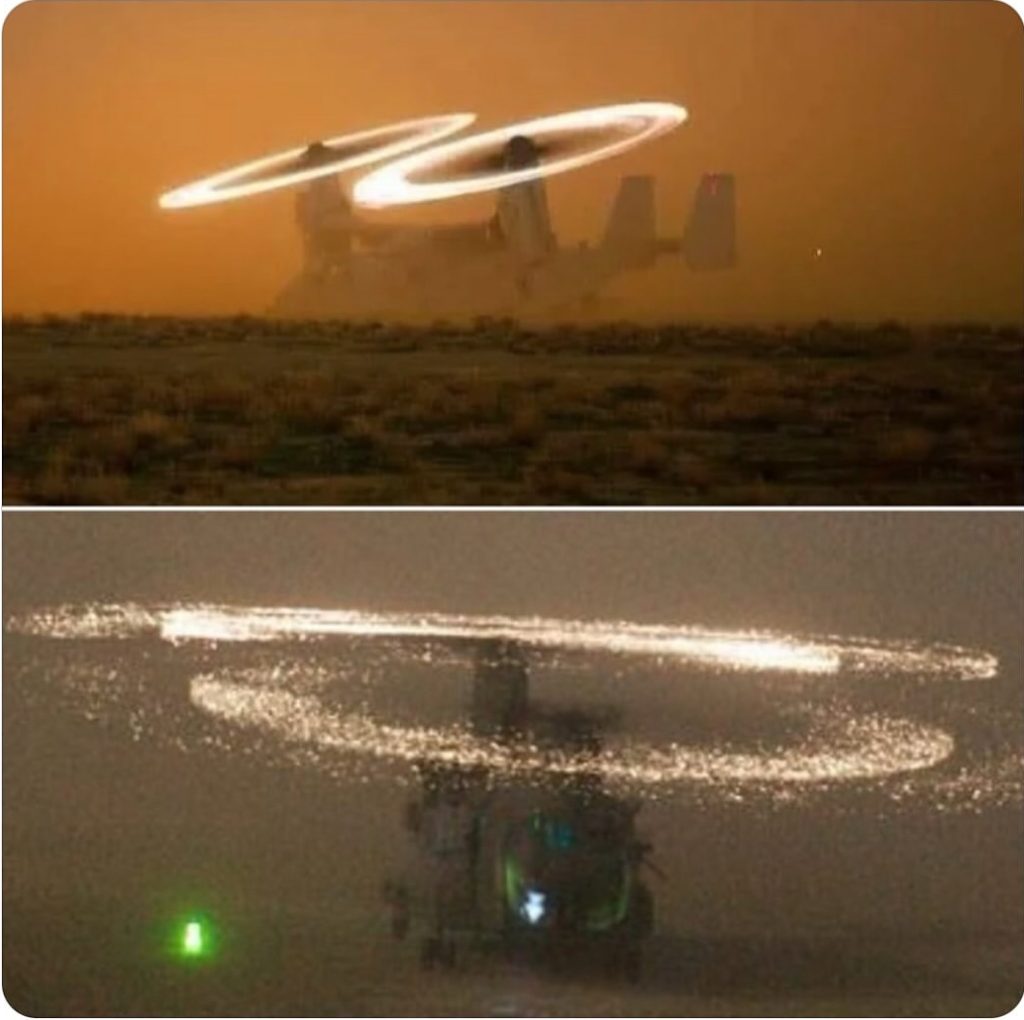
Stories of helicopter halos often spread quickly online because the images look almost too strange to be real. Some people assume the photos are fake, edited with glowing circles for effect. But those who know aviation confirm that it’s very real, and very hard to witness firsthand. That’s why the rare pictures and videos are so mesmerizing—they’re not just documenting a technical detail, they’re capturing a fleeting moment of beauty born from danger.
In the end, the glowing halo of helicopters in sandstorms is more than just a scientific curiosity. It’s a reminder of the thin line between awe and risk, between the mechanical world we build and the natural world that surrounds us. It’s proof that even in the harshest conditions, there’s room for beauty to emerge—brief, fragile, and unforgettable.
Next time you see those glowing rings circling a helicopter in the desert sky, remember that you’re looking at a phenomenon older than science, once feared by sailors and now witnessed by pilots. It’s not just sparks in the air—it’s nature’s electricity dancing with human invention, creating a halo that belongs to both.

Daniel Reed is a curious mind with a passion for breaking down how the world works. With a background in mechanical engineering and digital media, he turns complex ideas into easy-to-understand articles that entertain and inform. From vintage tools and modern tech to viral internet debates and life hacks, Daniel is always on the hunt for the “why” behind the everyday. His goal is simple: make learning feel like scrolling through your favorite feed — addictive, surprising, and fun.
